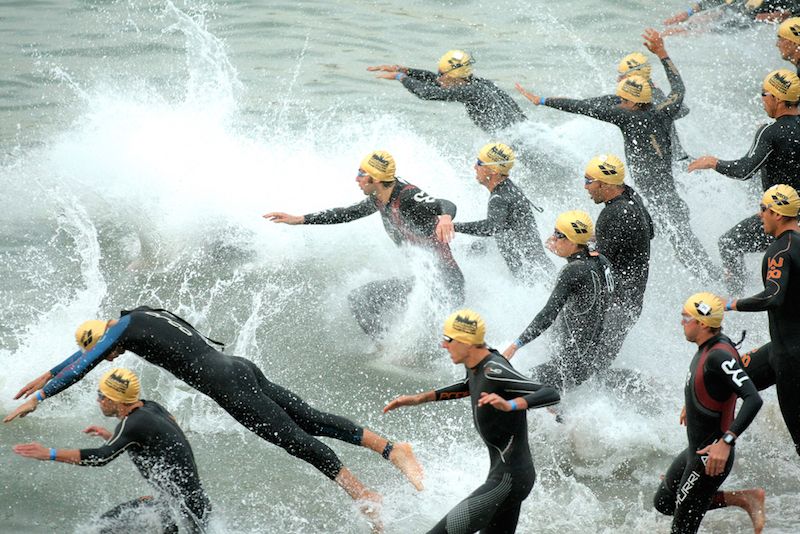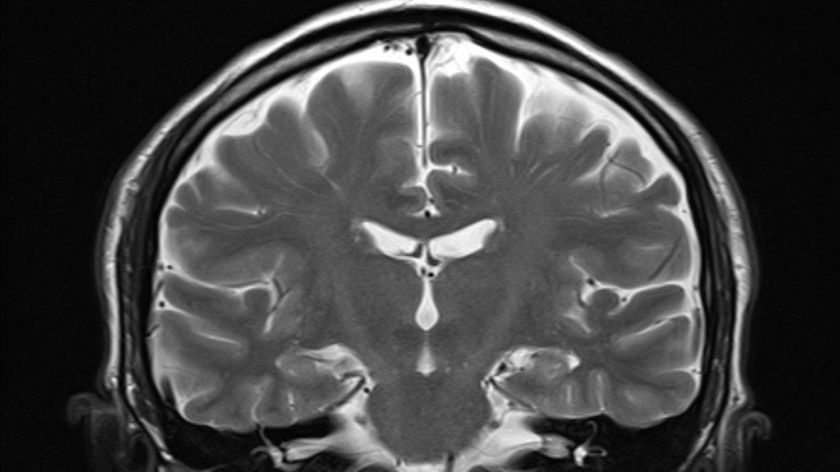Triathlete Deaths Possibly Linked to Fluid in the Lungs

The popularity of triathlons — races in which competitors run, bike and swim — has exploded over the past 15 years. According to USA Triathlon, the leading group that organizes races, the number of people with one-day memberships (indicating race participation) stood at more than 447,000 in 2014, compared with about 128,000 in 1999.
But a small yet persistent number of tragedies have marred the triathlon boom. Triathletes have a death rate of approximately 1.5 people per 100,000 participants, according to a 2010 article in the journal JAMA. That's not many, but it is two to three times higher than the rate seen in marathons.
Most of the deaths occur during the swim portion of the races, when participants are crowded together in the water. And when someone dies during a swim, it's tough to determine the cause. [The Odds of Dying: A Look At Your Chances of Death from Causes Both Common and Unusual]
Now, new research hints that a rush of fluid into the lungs may sometimes play a role.
Fluid in the lungs?
In the new research, scientists looked at a condition called immersion pulmonary edema (IPO). When someone jumps into water — especially cold water — the body rapidly shunts blood away from the extremities and moves it toward the core. Sometimes, this can lead to a change in internal pressure that forces fluids from the blood into the lungs, leading to shortness of breath and blood-tinged mucus. If a swimmer can't get out of the water quickly, the fluid buildup (the edema) in their lungs may incapacitate them.
The researchers at Duke University Medical Center and the University of Iowa tracked triathlon deaths in the United States and Canada from October 2008 to November 2015. They found that 58 people died while training or during competitions, including 42 who died during the swim portion. Then, the researchers requested autopsy records from those swimming deaths. (They didn't compare the swimming deaths to the biking and running deaths because there were very few fatalities from those other portions of the race, and many of the deaths that did occur were the result of car collisions.)
Of the 23 records the researchers were able to secure, 19 belonged to men and four belonged to women. In some cases, there were obvious cardiac problems that could have contributed to the person's death. Four men had significant coronary artery disease, defined as blood vessels that were narrowed by more than 70 percent. Another man experienced a tear in his renal artery, causing him to hemorrhage; another died when his aortic artery tore open. A third man had heart stents, indicating existing cardiovascular disease. The researchers removed this group from their analysis, leaving 16 people without any obvious reason to have died in the water.
Sign up for the Live Science daily newsletter now
Get the world’s most fascinating discoveries delivered straight to your inbox.
Cardiac checkup
Of this remaining group, six people had excessively large hearts, the researchers found. In particular, the athletes showed evidence of left ventricular hypertrophy, meaning that the chamber of the heart that pumps blood to the body is larger than usual.
Elite athletes often have larger hearts than their sedentary counterparts because they work the muscle harder, but this so-called "athlete's heart" is usually not as pronounced as what was seen in the triathletes who died, the researchers reported Aug. 29 in the journal BMJ Open Sport & Exercise Medicine.
The researchers also compared the results of the autopsies to a cohort of 225 healthy triathletes and found vast differences in the proportion of people with thickening of their heart walls. The septum, or middle wall, of the ventricles was thickened in 1 percent of the healthy athletes, compared with 67 percent of the deceased athletes. Likewise, the posterior wall of the ventricles was overly thick in 0.5 percent of the healthy triathletes, compared with 50 percent of the deceased triathletes. [10 Amazing Facts About Your Heart]
Previous studies had found left ventricular hypertrophy to be a risk factor for immersion pulmonary edema. The new findings don't prove that the triathletes died of IPO, the researchers warned, but they do suggest a possible explanation for some deaths.
"The message is that if people have untreated hypertension or they're known to have ventricular hypertrophy, they need to get evaluated and treated before they embark on this sport," study researcher Dr. Richard Moon, a professor of anesthesiology and medicine at the Duke University School of Medicine, said in a statement.
Other explanations for triathlete deaths have been suggested as well. A 2015 commentary in the journal Current Sports Medicine Reports pointed to some possible explanations, such as panic attacks caused by crowded race conditions and cold-water races when athletes are used to training in warm pools. Some triathlon organizations are working to make changes to events that may decrease the risk. Ironman, for example, altered its swims in 2013 so that participants start in a staggered fashion rather than entering the water all at once.
Original article on Live Science.

Stephanie Pappas is a contributing writer for Live Science, covering topics ranging from geoscience to archaeology to the human brain and behavior. She was previously a senior writer for Live Science but is now a freelancer based in Denver, Colorado, and regularly contributes to Scientific American and The Monitor, the monthly magazine of the American Psychological Association. Stephanie received a bachelor's degree in psychology from the University of South Carolina and a graduate certificate in science communication from the University of California, Santa Cruz.













